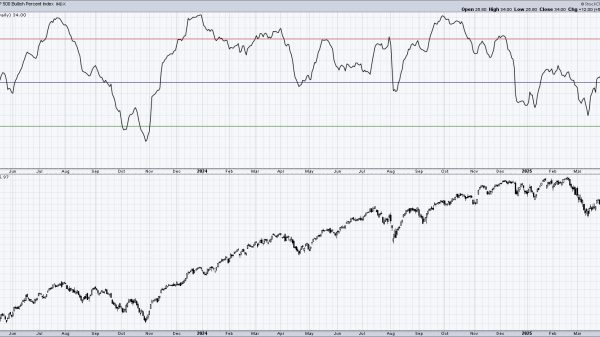Gene Healy
Two weeks into the first Donald Trump presidency, Washington was freaking out about presidential style: “alternative facts” about Inaugural crowd size; scandalizing the CIA(!); using the National Prayer Breakfast to roast Arnold Schwarzenegger for lousy ratings as host of Celebrity Apprentice.
Eight years later, the Beltway meltdown is largely about policy substance. Little wonder: Where Trump 1.0 issued only a single first-day executive order, Trump 2.0 came out of the gate with 26—and the pace has barely slackened since.
President Trump’s flood-the-zone approach has led to some breathless hyperbole from legacy media: “madness”; “unprecedented times”; a “terrifying flurry”! C’mon man: Given the death-metal pace of executive orders at the start of Joe Biden’s presidency, Trump’s flurry is hardly “unprecedented.” As for “terrifying,” I suppose it depends on what scares you. For the political press and official Washington, whether “energy in the executive” is cause for celebration or panic turns entirely on who’s getting zapped.
Libertarians should take a more principled view. That’s my aim here: first, the bad—Trump’s most dangerous power grabs. Then, the bright spots—orders that advance liberty without shredding the Constitution. Finally, I’ll take a broader look at the dangers of our accelerating slide into pen-and-phone governance.
Bringing Negative Energy
Trump’s executive-order onslaught offers plenty for libertarians to loathe: two bogus national emergency declarations, the militarization of border-control and drug interdiction policy, and the weaponization of the International Emergency Economic Powers Act in service of “the dumbest trade war in history.”
At JustSecurity, Adam Cox and Trevor Morrison flag three Trump directives that rest on a George W. Bush–style “constitutional prerogative to ignore, disregard, or even openly violate federal laws.”
the order purporting to rewrite the Fourteenth Amendment by eliminating birthright citizenship; the executive order (EO) suspending the TikTok ban without a shred of statutory cover (a bridge too far even for John Yoo, author of the Bush torture memos); and the “Invasion” Proclamation, which, per Cox and Morrison, conjures up an extralegal prerogative to suspend any law Congress has passed affording noncitizens the right to remain in the United States.That’s all pretty bad, though it’s an open question how much of it will survive first contact with the federal courts (so far, the birthright citizenship order looks only slightly more viable than Biden’s 11th-hour attempt to graft the Equal Rights Amendment onto the Constitution).
Dismantling the State Church of Woke and Other Policy Wins
The good news is, among the orders that are legally sound, there are some clear policy wins for supporters of individual liberty, limited government, and free markets. Chief among them are the directives (1) eliminating affirmative action in the federal government and for federal contractors (EO 14173); and (2) ripping out federal diversity, equity, and inclusion programs root and branch (EO 14151).
Those directives go a long way toward making good on Trump’s pledge, in his second inaugural address, to “end the government policy of trying to socially engineer race and gender into every aspect of public and private life.” Last I checked, that was at least as important a libertarian policy priority as freeing Ross Ulbricht. So why the long faces?
Any post–Lyndon B. Johnson Republican president could have ended affirmative action; except for Ronald Reagan, none of them even tried: too divisive! Wouldn’t be prudent! Credit where due: Trump actually did it. Some norms deserve to be smashed.
Of course, I’m not crazy about Section 4 of the “Ending Illegal Discrimination” directive (EO 14173), which orders each federal agency to find up to nine potential civil rights cases against private-sector entities. But they’re not going to have to dig very deep to fill that quota, given the extent to which many American universities and Fortune 500 companies have been flagrantly violating the law. It’s pretty clear, for example, that if AT&T adopted workplace training that insisted, “black people, you are the problem” and “racism is a uniquely black trait,” the Equal Employment Opportunity Commission would want to have a word. It’s not exactly state neutrality to only enforce the race-neutral Civil Rights Act on behalf of preferred groups. If you’d prefer that the feds get out of this business entirely, then consider whether Barry Goldwater had a point.
Other pen-and-phone policy wins include:
EO 14168, which lays the groundwork for repealing the Biden Title IX rule governing bathroom access for practically every K–12 public school and college in America; “Restoring Freedom of Speech and Ending Federal Censorship,” (EO 14149) forbids federal officials from “engag[ing] in or facilitat[ing] any conduct that would unconstitutionally abridge the free speech of any American citizen.” (A good first step, but as Andrew M. Grossman and Kristin A. Shapiro argue a 2023 Cato study, “The way to address censorship by proxy [is to] require government officials to disclose it”; such a requirement would actually give the order teeth); and EO 14154, “Unleashing American Energy,” which announces the administration’s intention to “eliminate the [Biden] ‘electric vehicle (EV) mandate’” and roll back water-flow restrictions on showerheads and toilets.Is This Any Way to Run a Country?
Taking a longer view, it is, of course, insane that 21st-century presidents get to decide what kind of car you can buy, who gets to use the girls’ locker room, whether you can smoke menthols, and how much water flows through your showerhead and commode.
It shouldn’t be this way; in living memory, it wasn’t. Thirty years ago, first-week stroke-of-the-pen policy changes were pretty small beer. When Bill Clinton took office in 1993, for example, he reversed two Reagan-Bush EOs: the Mexico City Policy on foreign aid and abortion and another ordering federal contractors to post notice of their employees’ Beck rights. Today, fundamental questions of governance turn on which team, red or blue, manages to seize the presidency.
If we’re stuck with this crazy system, then I prefer greater automotive choice, fewer bureaucratically enforced ideological manias, and, of course, luxurious, free-flowing showers and hearty flushes. But at some point, you have to ask yourself, is this any way to run a country?
In Federalist 70, Alexander Hamilton insisted that “energy in the executive” would foster “steady administration of the laws.” But living with the turbocharged modern presidency means whipsawing between extremes as the law changes radically whenever the office changes hands. That system isn’t just stupid, it’s dangerous: By raising the stakes of the transfer of power, it risks making every presidential election a “Flight 93 election.”
There’s no shortage of smart legislative proposals for reining in presidential power. If we don’t want the president to be able to unlock new statutory powers by saying the magic words “national emergency,” Congress could amend the National Emergencies Act so those powers quickly expire unless Congress votes to approve the national emergency declaration.
Sen. Rand Paul’s REPUBLIC Act aimed to do just that—while also blocking the use of the International Emergency Economic Powers Act as a trade-war weapon. Other bills from Senator Paul and Sen. Mike Lee would require congressional approval for presidentially imposed trade restrictions. But while the REPUBLIC Act cleared committee last September, none of these proposals even made it to the floor—let alone the president’s desk.
The political problem is that, barring a veto-proof supermajority, these framework statutes require the president’s signature. And there’s no way President Trump is going to go along with statutory reforms that clip his wings. He likes declaring phony national emergencies and launching trade wars from his couch.
Another key reform, the REINS Act, may have a better shot at getting this president’s signature. The REINS Act (for Regulations from the Executive in Need of Scrutiny) would require “major rules” (those with an economic impact scored at $100 million a year or more) to get affirmative approval from Congress. Versions of the act have passed the House several times, including in the last Congress.
Some of Trump’s close advisers support the REINS Act, and it could be pitched to him as a way to frustrate future presidents who want to restart regulatory initiatives, like the Biden EV mandate, that he’s undone. It would also, by reining in the “imperial administrative presidency,” foster steadier administration of the laws.
As a recent survey shows, “Americans think a president’s power should be checked—unless their side wins.” But even if you’re currently enjoying the sowing, you’re going to get the reaping when power inevitably changes hands. In our partisan myopia, we’ve allowed the presidency to become powerful enough to tear the country apart. However daunting the current political obstacles to executive-power reform, there’s never been a greater need to rein in the president’s emergency powers, war powers, authorities over trade, and the ability to make law with the stroke of a pen.
























